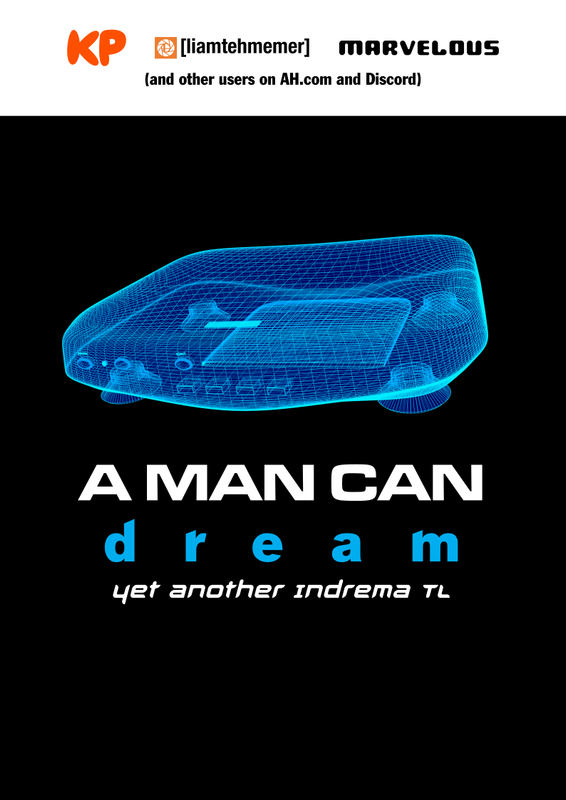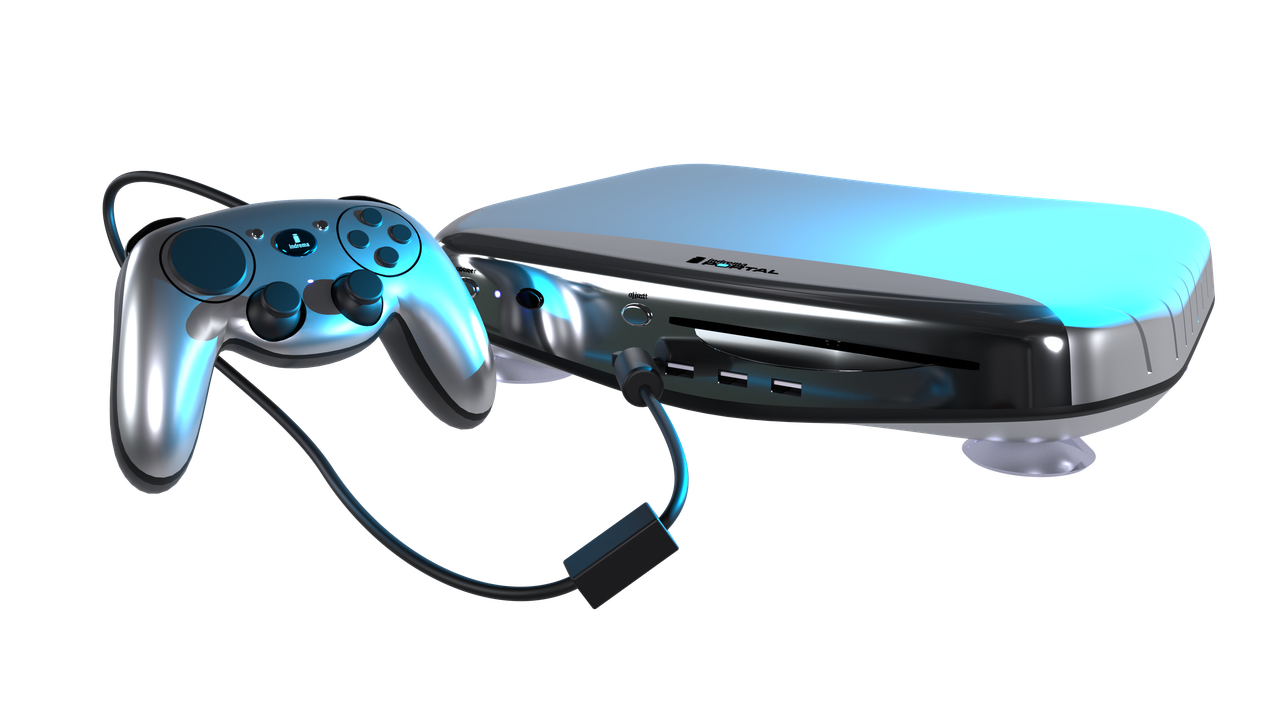2003 - Portal goes worldwide/Ion is announced
It’s the start of a new year, and Indrema celebrates their first decade of operation.
The Portal is set to launch in the UK, France and Germany. Although some people across the pond got their first taste of the Portal by importing an NTSC one, and using a power converter, this time, it was official.
A proper store release of the PAL and NTSC-J Portal was finally released on October 14th, 2002 and March 24th, 2003 respectively, as stores like Toys “R” Us UK, Currys,
GAME,
Argos, and
Woolworths started selling the Portal in stores across England. The console was as popular in Britain as it was in the West. A similar thing happened in Australia, where stores like Target Australia,
Big W,
Kmart Australia,
Harvey Norman,
JB Hi-Fi, David Jones and
The Gamesmen started selling the Portal with the same reaction. Stores like
Yamada-Denki carried the Portal in Japan, although sales weren’t as good as Europe, the US, and even Oceania despite Toshiba distributing it there.
It was criticized for the aforementioned size, weight, and loudness, and there was a lack of Japanese games for the system.
It did have a cult following there, which still exists to this day, but not as popular as the homegrown consoles of Sony and Nintendo. As an attempt to boost sales, Indrema promoted the Portal with a stereotypically American campaign.
Because of that, Indrema started developing a smaller version of the Portal mainly designed for Japan, also it would be sold in America as well, primarily as a cheaper option (for example the Portal costed $249.99, while the smaller console would be $149.99) The redesign would be expected to release outside of Japan “later this year” according to a leaked memo from Indrema, posted on the website IndremaNewsNetwork.com (which would become a massive provider of news + leaks around this time)
Meanwhile, development on the “portable Portal” was in full swing, as Indrema R&D were trying to figure out how to squeeze the power of the Portal into a portable form factor. The company was looking for a supplier for the CPU and GPU for the “Bart” handheld. The system would be expected to have a custom ARM CPU from frequent collaborator Samsung and a
PowerVR-based GPU. The system would have online capabilities via cellular data, Wi-Fi, and Bluetooth.
There was also the problem of the physical format to be used. Indrema wanted something with a high-capacity of data to accommodate for the CPU that was planned to be used. Indrema thought cartridges, traditionally used on handhelds, would be too expensive, so they looked towards miniDVDs. However, it did not accommodate their standards of a high data format, since they only stored 1.4 GB of data on a single layer. The decision was made to make an entirely new format, based on miniDVDS, combining the data of a DVD in a small form factor, that could store 20 GB of game data on one single disc [1], and accommodated a 2 hour movie on one single disc. It would have a higher density than the average DVD to store more data. Bart would be what Indrema wanted - most of the Portal's power in your pocket. Indrema wanted to find a company to partner with to make these ambitious discs. It was decided that Toshiba (the Japanese distributors of the Portal) should make the discs.
Rumors had been spreading about the handheld for months, leading to speculation. The allegedly rumored specs were released on IndremaNewsNetwork. On July 23, 2003, Indrema posted on their website a teaser of the Bart system, featuring a gray-colored prototype console, officially codenamed the Project GO [4].
The prototype specs were also revealed:
| CPU | 425 MHz ARM CPU |
| Memory | 32 MB RAM (unified) |
| Media | Indrema MiniDiscs, digital distribution (I-Link Store) |
| GPU | PowerVR-based GPU |
| Storage | IBM Microdrive |
| Audio | 3.5 mm headphone jack, built in stereo speakers |
| Video | 4-inch resistive IPS touch screen) |
| OS | IndremaOS Mobile (Linux-based OS) |
| Connectivity | Cellular data, I-Net Internet WI-FI, Bluetooth 1.2 |
These specs gained massive attention on online forums, being reportedly more powerful than the upcoming consoles from Sony and Nintendo, the PlayStation Portable, and Nintendo DS respectively.
On October 23th, 2003, the final version was revealed to the public, along with the final name
Indrema Ion. Indrema announced that the handheld would be at 2004’s Winter Consumer Electronics Show. and also at E3 2004, (since the one year ban had passed). Meanwhile, its rivals, the PSP and Nintendo DS were gearing up for launch, so Indrema decided to delay the launch to early 2005 to not get overshadowed by the competition.
Later on December 14th, 2003, the aforementioned Portal Mini came out. Unlike its larger counterpart, it had a 2.5 inch IDE hard drive that could be easily upgraded, replaced the slot-loading drive with a cheaper motorized tray-loading one, and got rid of the loud cooling fan, replacing it with a much smaller and quieter one. It was the first model of the Portal not to be made by Samsung, with Foxconn and Flextronics taking over production going forward, the latter being the same manufacturer of the original Xbox for Microsoft. A cheaper Portal allowed Indrema to catch up with the lower prices of its competitors. The original model, now unofficially known as the Portal Classic, could still be bought while supplies lasted.
Indrema was also planning to make a higher end version of the Portal, codenamed “Red Box” [2], with 256 MB of RAM, a 1 GHz Pentium III, and an enhanced version of the GPU and two Indrema AV ports, both input and output. It would support all the ports of the classic version, and also included DVR playback. This console never saw the light of day, as Indrema was more focused on a successor to the Portal, but some elements of the console would be recycled for the next console. However, by that point, modders were able to upgrade the Portal’s CPU to a faster one, and found a way to upgrade the GPU with a GeForce FX or Radeon R300 card for PCs. [3]
While its sales did improve in Japan, and did better than the Xbox, another American console that flopped in Japan, Indrema really needed to appeal more to Japan to compete with Sony and Nintendo. As Toshiba had no experience in the console industry beforehand, they tried getting former employees from Sega to market and promote the console in the Japanese market.
Eventually, Indrema decided to open up a division in Japan. Indrema Japan was set up, cutting the middleman, and an in-house game development team (Indrema Studios Japan) was composed of former Sega, Konami and Capcom employees. Toshiba later stopped distributing the Portal in Japan, as Indrema Japan took over full distribution. Soon Indrema signed deals with Japanese developers and publishers to release their games on the Portal, the most notable one being Konami (and by extent Hideo Kojima and his team) with their port of Metal Gear Solid 3: Subsistence, released two years later as a timed exclusive, with PS2, Xbox and PC ports coming later [5].
Around that time, Samsung stopped distributing the Portal everywhere else, handing over the rights to Indrema themselves, while Foxconn and Flextronics would take over manufacturing of the Portal and any future consoles. Indrema rented out a warehouse in Camden, New Jersey, and established a distribution network with various stores, both brick and mortar (Circuit City, Wal-Mart, Best Buy, Toys “R” Us) and online (Amazon.com).
[1] Think of it as an earlier Blu-Ray.
[2]
“Red Box” was also a higher end version of the L600 that had DVR playback planned to release later down the line IOTL had the console been released.
[3] Although the Slide Bay functionality was
Dummied Out, the NVIDIA GPU was connected with a proprietary
AGP-based connector. Some modders created a board that converted a standard retail graphics card to the Portal’s board. Some even used the upgrades to make the Portal run a desktop Linux distro or even (ironically) Windows XP, turning the Portal into a slimline gaming PC.
[4] An obvious nod to the IndremaGO!, the handheld that Indrema developed in The Indrema Revolution [REVAMPED], the previous version of TTL.
[5] That practice was just like MGS2: Substance and its timed exclusivity on the Xbox, with PS2 and PC ports coming later.
Up next...
We go into Mario's World.







